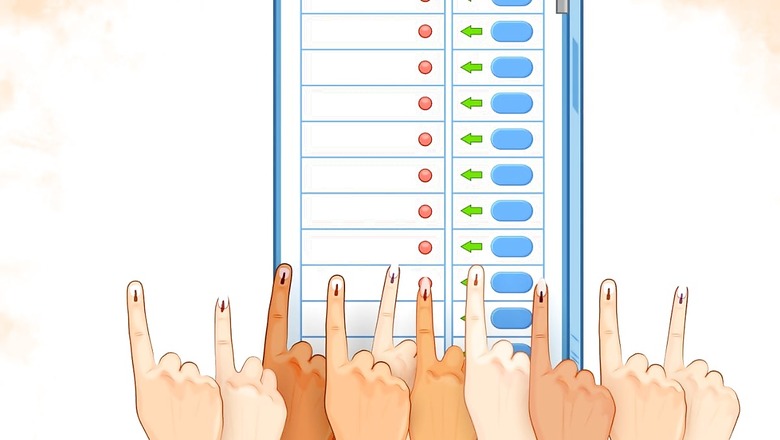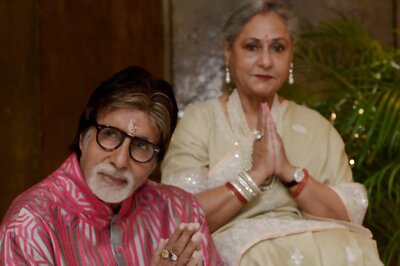
views
India is voting in its biggest election ever. The crucial question is whether the lotus emblem party will secure another five years in power or if their winning streak will end. However, the leader of the current ruling party seems to have his vision set even further ahead in the name of Viksit Bharat@2047, envisioning India as a developed nation by its centenary. It’s a vote for progress and a decision to choose wisely.
Over the years, the current ruling government has showcased and anchored upon the pillars of economic growth, nationalism and growing authoritarianism. The leader in command has promised that India would become the third-largest economy in the world. Under his leadership, India has already risen to become the fifth-largest economy and continues to grow. However, despite this economic growth, India’s per capita income lags behind, ranking outside the top 100 globally at approximately $2500. This highlights a significant gap in the average welfare of Indian citizens that needs to be bridged. Notably, private investment has remained subdued and foreign investment has depreciated as a fraction of GDP.
Despite likely victory speculations for a third term too, dissatisfaction lingers over youth unemployment, inflation and other socio-economic issues, largely overlooked on the BJP’s campaign trail.
It’s crunch time. India faces a critical employment crisis, particularly among its young and educated population. A recent ILO study revealed that over 80 per cent of unemployed individuals in India are young, and alarmingly, those with an education are nine times more likely to be jobless than those without. Every year, 8 million young Indians enter an already saturated job market, leading many highly educated individuals to accept low-paying positions, such as delivery jobs, out of necessity.
Youth unemployment in India looms at a staggering 40-42 per cent, potentially making it the highest in the world. While India boasts the fastest-growing major economy, it has unfortunately failed to adequately integrate its youth into this growth. One key factor is the lack of a robust manufacturing sector, which typically drives job creation in developing nations. Unfortunately, the situation remains grim in India.
Over the past decade, Prime Minister Modi has positioned India’s youth as the engine of growth, promising millions of jobs. Yet, these promises ring hollow for many young Indians who, despite their hard work and education, feel overlooked. The point to ponder here is that the nation’s prospects rely on its youth; if they are stuck in a rut, how will the nation evolve?
India’s rapid economic growth exists alongside persistent challenges related to inequality. While government programs aim to support vulnerable populations, their effectiveness in reducing societal disparities is debated. For example, the Jal Jeevan Mission has significantly increased access to tap water in rural areas, but concerns regarding water quality and consistent supply persist. Millions of Indians continue to face poverty each year. Achieving equal opportunities for all, particularly in a nation as diverse as India, requires redistribution efforts. This remains a significant and complex undertaking for the upcoming government.
The BJP’s enduring popularity, despite existing challenges, suggests a connection with a sense of shared identity and national pride. The digital payments revolution is truly a spectacular chronicle. The government merits applause for executing these plans with enhanced efficiency. In regions facing paucity, the saffron party has bolstered the public dissemination of vital resources. It has focused on delivering essential resources, such as gas cylinders, bank accounts, and sanitation facilities, directly to underserved communities. While ensuring the long-term sustainability of these initiatives remains a challenge, their accessibility marks a significant shift in public service delivery.
Demonetisation appears to have quelled the informal economy, even though it was initially presented as a bitter pill that everyone needed to swallow for the nation’s paramount interest. Furthermore, PM Modi’s decision to revoke Article 370 and alter the status of Jammu and Kashmir, despite facing criticism and its controversial nature (it was considered India’s only Muslim-majority state), undoubtedly marked a historic turning point. This bold action signified a step in the right direction.
The narrative extends beyond these accomplishments. Recall a young Modi rising within the BJP, advocating alongside senior leaders for the construction of a Ram temple in Ayodhya. Three decades later, he fulfilled that vision, playing a central role in the temple’s inauguration. This momentous occasion sparked widespread celebrations, reminiscing the epic return of Lord Ram to Ayodhya, glorified by the lighting of lamps across the country. A subliminal brought in open, a massive hit.
There is ongoing speculation that the prime minister is approaching the current election from a position of strength, a testament to the BJP’s rise to becoming the dominant political force. It is widely hoped that the new government will prioritise robust job creation, perhaps by incentivising domestic manufacturing. The AI boom has yet to fully impact India, offering significant job opportunities in the sector. By engaging strategically with diverse global value chains, India has the potential to bridge existing economic divides. The upcoming government, while inheriting a set of existing challenges and opportunities, must leverage the skills of its young population to drive continued economic progress. India should aim to be the first nation to achieve zero unemployment. Yes, it is possible. India has and will bounce back.
What could possibly go wrong in a bullish environment fueled by a strong belief that the economy is on track to reach $5 trillion in three years? There could be a modest knee-jerk reaction with weakness in INR, ETFs, FX, and risk assets if the BJP loses. The world has mixed opinions on witnessing a hat trick on June 4. As we await the final result, the jitteriness persists.
Megha Jain is Assistant Professor, Shyam Lal College, University of Delhi, India, [email protected]; Vanyaa Gupta is Seasoned Technocrat, Delhi, India. The views expressed in this article are those of the author and do not represent the stand of this publication.


















Comments
0 comment